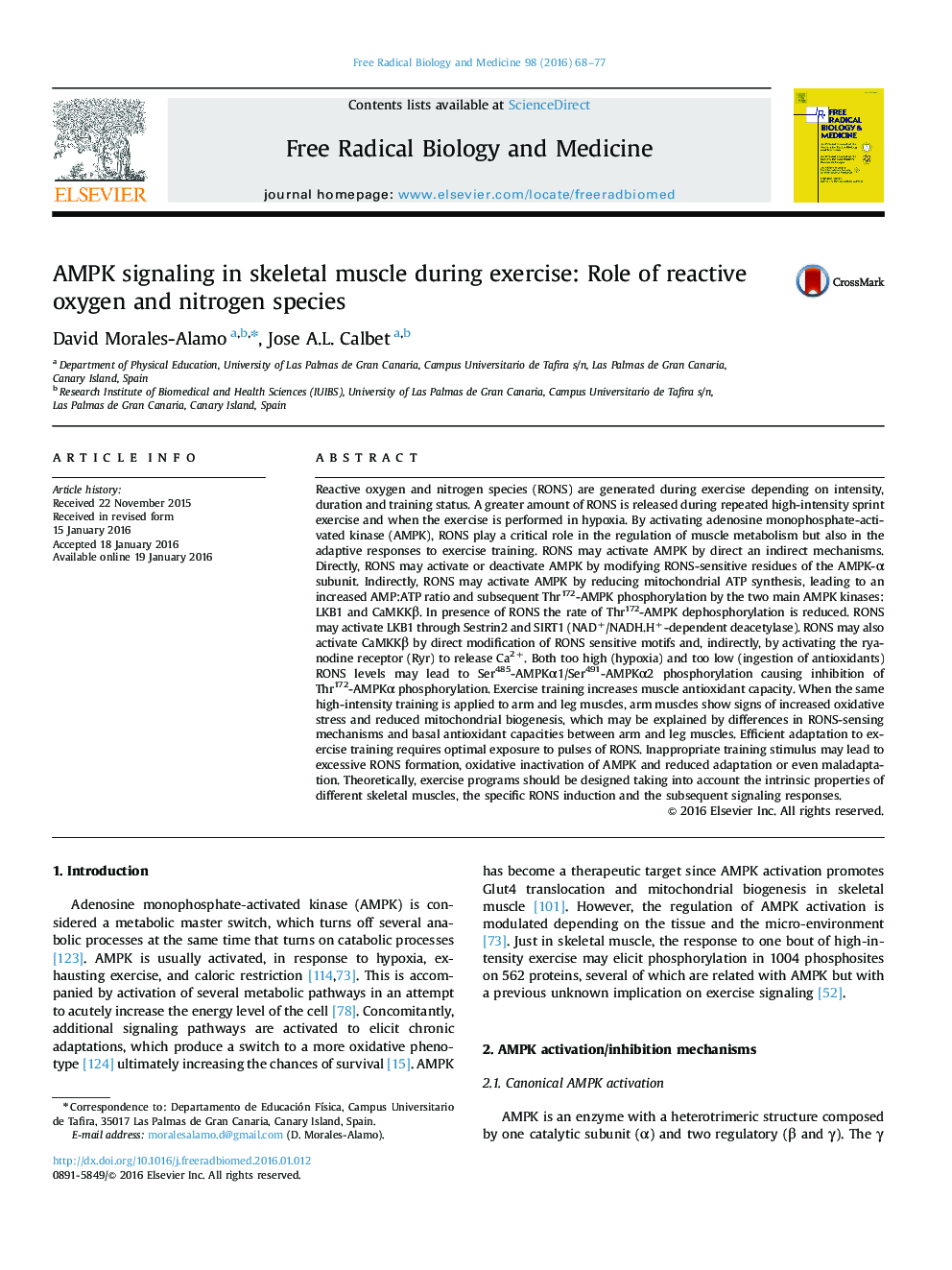| کد مقاله | کد نشریه | سال انتشار | مقاله انگلیسی | نسخه تمام متن |
|---|---|---|---|---|
| 1907655 | 1534945 | 2016 | 10 صفحه PDF | دانلود رایگان |
• Reactive oxygen and nitrogen species (RONS) are generated during exercise.
• Efficient adaptation to exercise training requires optimal exposure to RONS.
• RONS may activate or deactivate AMPK by direct and indirect mechanisms.
• RONS may modulate AMPK by regulating Ser485-AMPKα1/ Ser491-AMPKα2 phosphorylation.
Reactive oxygen and nitrogen species (RONS) are generated during exercise depending on intensity, duration and training status. A greater amount of RONS is released during repeated high-intensity sprint exercise and when the exercise is performed in hypoxia. By activating adenosine monophosphate-activated kinase (AMPK), RONS play a critical role in the regulation of muscle metabolism but also in the adaptive responses to exercise training. RONS may activate AMPK by direct an indirect mechanisms. Directly, RONS may activate or deactivate AMPK by modifying RONS-sensitive residues of the AMPK-α subunit. Indirectly, RONS may activate AMPK by reducing mitochondrial ATP synthesis, leading to an increased AMP:ATP ratio and subsequent Thr172-AMPK phosphorylation by the two main AMPK kinases: LKB1 and CaMKKβ. In presence of RONS the rate of Thr172-AMPK dephosphorylation is reduced. RONS may activate LKB1 through Sestrin2 and SIRT1 (NAD+/NADH.H+-dependent deacetylase). RONS may also activate CaMKKβ by direct modification of RONS sensitive motifs and, indirectly, by activating the ryanodine receptor (Ryr) to release Ca2+. Both too high (hypoxia) and too low (ingestion of antioxidants) RONS levels may lead to Ser485-AMPKα1/Ser491-AMPKα2 phosphorylation causing inhibition of Thr172-AMPKα phosphorylation. Exercise training increases muscle antioxidant capacity. When the same high-intensity training is applied to arm and leg muscles, arm muscles show signs of increased oxidative stress and reduced mitochondrial biogenesis, which may be explained by differences in RONS-sensing mechanisms and basal antioxidant capacities between arm and leg muscles. Efficient adaptation to exercise training requires optimal exposure to pulses of RONS. Inappropriate training stimulus may lead to excessive RONS formation, oxidative inactivation of AMPK and reduced adaptation or even maladaptation. Theoretically, exercise programs should be designed taking into account the intrinsic properties of different skeletal muscles, the specific RONS induction and the subsequent signaling responses.
Journal: Free Radical Biology and Medicine - Volume 98, September 2016, Pages 68–77
